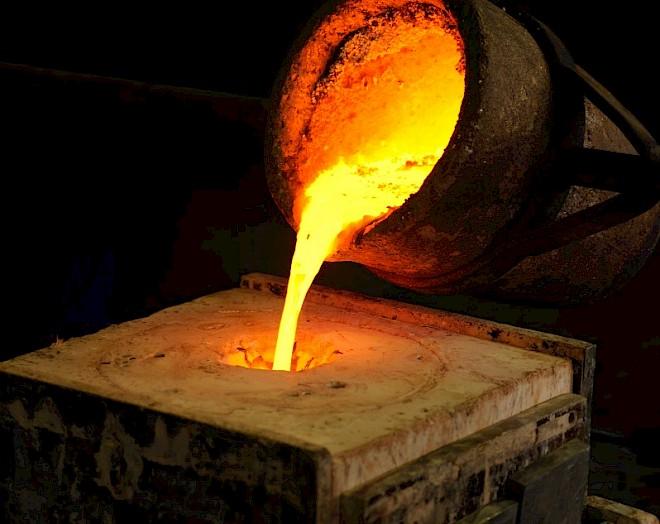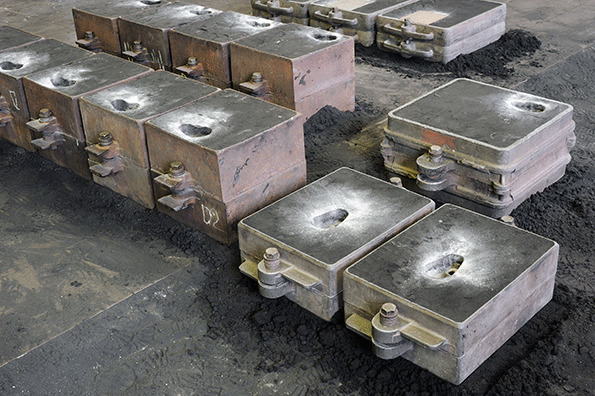
Chian OEM Sand Casting Suppliers.
Fast and great quotations, informed advisers to help you choose the correct product that suits all your preferences, a short creation time, responsible top quality control and different services for paying and shipping affairs for OEM/ODM Manufacturer China OEM High Quality Youlin® Sand Casting, We Sincerely welcome consumers from everywhere in the entire world to go to us, with our multifaceted cooperation and operate jointly to build new markets, make win-win excellent foreseeable future.
OEM/ODM Manufacturer China Casting Parts, Iron Castings, Our tenet is "integrity first, quality best". We've got confidence in providing you with excellent service and ideal products. We sincerely hope we can establish win-win business cooperation with you in the future!
1.Capacities of Metal Sand Casting Services
 Youlin regularly casts the alloys listed with our metal Youlin® sand casting services, which present a wide range of chemical compositions and physical properties. Our furnace facilities, however, offer considerable melting flexibility and we are able to pour practically any commercially available aluminum, brass, bronze or copper casting alloy, at capacities of ounces up to one thousand pounds. We offer the following types of metal castings:
Youlin regularly casts the alloys listed with our metal Youlin® sand casting services, which present a wide range of chemical compositions and physical properties. Our furnace facilities, however, offer considerable melting flexibility and we are able to pour practically any commercially available aluminum, brass, bronze or copper casting alloy, at capacities of ounces up to one thousand pounds. We offer the following types of metal castings:
Aluminum Sand Castings (Available aluminum alloys: 319, C355, A356, D712, available zinc aluminum alloys: ZA8, ZA12)
Brass Sand Castings and Bronze Sand Castings (Available Brass & Bronze alloys: C83600, C86500, C90200, C90300, C90500, C90700, C91600, C95400, C95500)
Copper Sand Castings (Available in high conductivity copper)
2.Advantages of Sand Casting Services
Although individual production situations may differ, sand mold castings in general provide a number of benefits, including the following:
|
High efficiency: |
Sand mold casting typically does not involve a lot of waste, making it a very efficient process. Today, many manufacturers reclaim and eventually re-use a high percentage of the casting sand utilized during this form of casting. Recycling excess parts significantly reduces the cost of the overall process. |
|
Producing parts with complex details: |
Sand casting permits the production of intricate metal parts and exterior surfaces. It also allows for the production of varying metal parts with complex details. |
|
Generous tolerance ranges: |
Depending on the metal and available manufacturing technologies, sand mold casting may permit dimensional control and consistency within ±0.030 to ±0.125” (± 0.8 to 3.2 mm) tolerance range. Usually, designers require more generous tolerance ranges along parting lines. |
|
The ability to utilize a variety of finishes: |
Sand mold castings generally utilize a variety of surface finishes, including but not limited to paint, powder coating, electroplating, shot blast finish and more. Usually, surface finish will range between approximately 300 and 500 gin (7.7 – 12.9 gm) rms. Also, minimum wall thickness amounts to.125”, whereas the desirable wall thickness equals .250”. |
|
Relatively low tooling and part costs: |
Sand mold casting does not necessarily involve the use of expensive manufacturing tools or supplies. Consequently, manufacturers can often produce products comparatively inexpensively utilizing this process. |
|
The ability to cast a wide variety of metals: |
Sand mold casting allows for the use of almost any metal or metal alloy. For example, manufacturers can utilize this process to create castings in cast iron, copper, copper alloys, carbon steel, steel alloys, gold, stainless steel, brass, silver and complex metal alloys. |
|
High versatility: |
High quality sand mold casting techniques offer the benefit of versatility. In other words, the process can be used to create both simple and complex metal parts. |
|
Production volume flexibility: |
Manufacturers apply sand mold casting for both low and high volume production runs. Therefore, this manufacturing technique may prove highly cost-effective in situations in which a company does not know how many units it will eventually need to produce. |
3.Full Range Methods of Sand Casting Services
 Youlin offers a variety of metal sand casting services to assure the most efficient and cost-effective production of your part. Determination depends on your requirements for size, run quantity, and the dimensional accuracy and surface finish required. The following processes are available for each kind of metal.
Youlin offers a variety of metal sand casting services to assure the most efficient and cost-effective production of your part. Determination depends on your requirements for size, run quantity, and the dimensional accuracy and surface finish required. The following processes are available for each kind of metal.
Permanent Mold: Permanent mold is a metal casting process that employs a reusable - or permanent mold, usually made from metal. The most common process uses gravity to fill the mold.
Green Metal Sand Casting: These castings are made using sand molds formed from using a mix of sand, clay, flour, and water. The sand is moist and reusable after being separated from the casting. This process is used for small to medium size parts.
No-Bake Metal Sand Casting: No-bake molds are expendable sand molds formed from using a mix of sand, resins and catalysts that harden the mold. This type of molding also produces a better surface finish than green sand molds. The sand is not reusable and must be disposed of properly. This process is used for medium to larger size parts.
Precision Shell Sand - expendable mold casting process that uses a resin covered sand that is blown onto to preheated iron patterns. The sand is blown onto the pattern and bakes the sand on to form the mold. This process has better dimensional accuracy, a higher productivity rate, and lower labor requirements. The sand is not reusable and must be disposed of properly. It is used for small to medium parts that require higher precision tolerances and finishes.
4.Problems often Encountered in Sand Casting Services
|
Thermal cracks |
Stomatal defects |
|
Because the product is not uniform during the cooling process, it causes cracks on the surface and inside of the product. A balanced melt flow rate is the key.
|
It is caused by uneven cooling of the product, excessively high temperature of the metal solution, or wrong setting of the sand mold density. The specific reasons should be analyzed for the location and distribution of stomata. |
|
Uneven nuclear membrane traces |
Incomplete product |
|
Because there is no accurate positioning between the molds, the position is changed during the mold clamping process, which causes the product to shift. |
Because the temperature of the molten metal solution is too low, it cools down without smoothly flowing into the corner after being poured into the cavity. Or the casting of the product due to insufficient amount of metal solution. |
5.FAQ
Q: What is sand casting good for?
A: Casting is used to make metal components of all sizes, ranging from a few ounces to several tons. Sand molds can be formed to create castings with fine exterior detail, inner cores, and other shapes. Nearly any metal alloy can be sand cast.
Q: What industries use sand casting?
A: Sand casting is used to produce over seventy percent of all metal castings, some of these include metal tools, car parts and plumbing. These castings are produced in specialized foundries and factories, and the process is considered an economical option because it requires less technology and cost.
Q: How accurate is sand casting?
A: The process has high dimensional accuracy, with a tolerance of ±0.010 in for the first inch and ±0.002 in/in thereafter. Cross-sections as small as 0.090 in (2.3 mm) are possible. The surface finish is very good, usually between 150 and 125 rms.